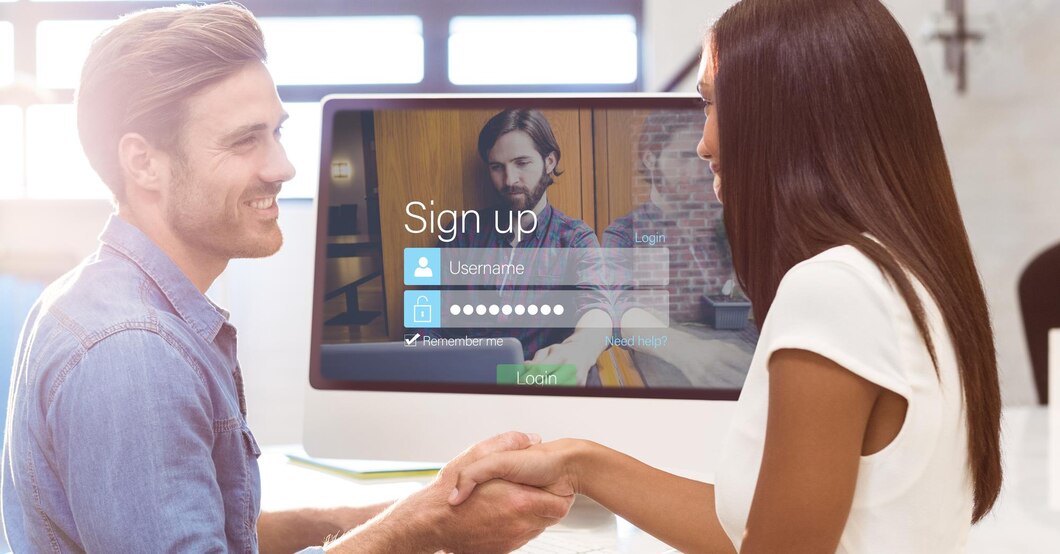With the complexities of modern security and privacy concerns, organizations across industries are increasingly turning to advanced visitor management solutions. A reliable visitor sign-in system streamlines the guest check-in process and enhances overall security and compliance with regulatory standards. Identifying the ideal software tailored to your organization’s unique requirements is imperative for a smooth and secure operation. Keep reading to understand the critical aspects that will guide you in choosing the right visitor sign in software.
Keep on reading till the end to learn more…
What Is A Visitor Sign-In Software?
You might remember how all the visitors who were temporarily visiting the building or an organization were made to sign a big fat data entry book in the past.
They used to write down their names, the time of entry, and the purpose of the visit. They also used to mention their contact details and who they would want to meet.
That was a visitor entry process that was made and managed manually. But times have changed. And with the evolution and advancements in technology, everything is now digital.
Data has become centralized, and it is managed that way. And THAR is where a Visitor Management Sustem comes into play.
A Visitor Sign-in Software is a part of the Visitor Management System (VMS). A VMS helps organizations keep track of visitors entering the building. It lets them efficiently manage the visitors.
A sign-in software for the visitors is a part of the smart VMS. It is located on the premises to control the data and to maximize security. So, the reason or purpose of having this system is nothing new. It remains the same as before.
Understanding The Security And Compliance Needs Of Your Organization

The first step in selecting visitor management software is analyzing the security and compliance demands specific to your organization. This may include understanding data privacy laws, such as HIPAA in healthcare settings, which your software must adhere to. Identifying these requirements early can help prevent legal and security issues in the future.
Scrutinize the various levels of access control offered by the software. It’s crucial that the system can identify and manage different visitor types, from contractors to VIP guests, ensuring appropriate access while maintaining security. Your staff should be able to easily monitor and control visitor movements within your facility.
Another key consideration is the software’s capability to keep thorough visitor logs. These records are vital not only for security audits but also for any emergency action plan in the event of a situation requiring a quick evacuation roll call. Ensure the system can securely store and manage data while providing quick and efficient retrieval when necessary.
Your organization’s industry may also influence the level of security you require. For instance, organizations that handle sensitive information or have high-security areas will need a sign-in system with advanced identity verification features, such as ID scanning or biometric checks.
Key Features to Look for in Visitor Sign-In Software
When evaluating potential visitor management software, consider the features that are essential for streamlining operations. User-friendly check-in processes, such as self-service kiosks or quick scan-in options, can significantly reduce queues and enhance visitor satisfaction.
Notification systems are another feature to look for. The software should notify the relevant personnel immediately upon a guest’s arrival. Additionally, customizable badges with photo IDs can enhance security by making it easier to identify visitors within your premises.
Also, the system should be able to pre-register guests, which can save time for both visitors and staff. Pre-registration can often include pre-screening questions that aid in security and compliance, ensuring unauthorized or risky visitors are flagged before they arrive.
Ensure the software also provides detailed reporting and analytics. These insights can help with data-driven decision-making, inform capacity planning, detect security patterns, and understand visitor trends. Reporting functionality is valuable for continuously improving visitor management protocols.
The Role of User Experience in Visitor Management Systems
The user experience is crucial to the success of any software solution, and visitor sign-in systems are no exception. It should be intuitive for both guests and administrative users, with minimal training required. A complicated system can result in a negative first impression for visitors and frustration for staff.
The interface design should be clean and inviting, offering clear instructions and guidance for visitors as they sign in. On the administrative side, the software should allow staff to easily oversee visitor flow and access clear and concise visitor data.
Mobile compatibility is increasingly a must-have for both visitors and administrative users. Whether it’s providing the option for visitors to check in using their smartphone or enabling staff to manage visitor details on the go, having a mobile-responsive system can significantly enhance the user experience.
Take a Look at Integrations
It is important that your VMS can be integrated with several other systems that you use for your organization. This helps with the overall efficiency and operations.
Some of the systems that you should consider incorporating your VMS with are security cameras, employee directories, and other access controls.
One of the reasons behind this is that most organizations use a lot of digital and smart software. Since integration helps with data centralization, using a VMS that can be integrated with other systems makes managing the data much more efficient and smart.
Freedom for Customization
Last but not least, one of the things that you should keep in mind while choosing a particular VMS is whether you can customize it for better usage.
Since every organization is different, the preferences and requirements for each of them will vary. Therefore, when choosing a particular software, it is important to see if it can meet all your needs.
A VMS that you can customize as per your requirements will help create a better and more positive experience for both visitors and staff alike.
Best Visitor Sign-in Software in 2024

Now that you know the importance of visitor sign-in systems, it is time to learn about the best software systems you can use.
The options are endless, but you should have a list ready, right? Here are the top three best Visitor Sign-in Software that you should check out this year:
1. SwipedOn
The first one on this list of the best Visitor Management Systems and Visitor Sign-in Software is SwipeOn. Just as the name suggests, it is one of the easiest to work with. It gets integrated with other systems pretty smoothly and helps in the working of the same. One of the best things about this platform is that the average time to get a response here is even less than two minutes.
2. Robin
Second on the list is Robin This one is a great platform for enterprise and mid-market companies. Additionally, you can also use it for scheduling meetings with people around the world. When it comes to customization, this platform is truly one of the most popular ones.
3. Doordesk
Last but not least, Doordesk is one of the most popular VMS tools that helps with enhanced security. It is a great choice if you want to improve your visitor experience and streamline the check-in and checkout process.
Bottom Line
Overall, a visitor sign-in system is an integral part of modern organizational security and efficiency. By understanding your specific requirements and reviewing your options carefully, you can select a visitor management solution that not only meets your immediate needs but also supports your organization’s growth and evolution over time.
In case you wanted to know about the things to keep in mnd while choosing a VMS, we hope that this blog has been of help to you. If you have any other questions related to visitor sign-in software, please feel free to let us know by commenting in the box below.






















